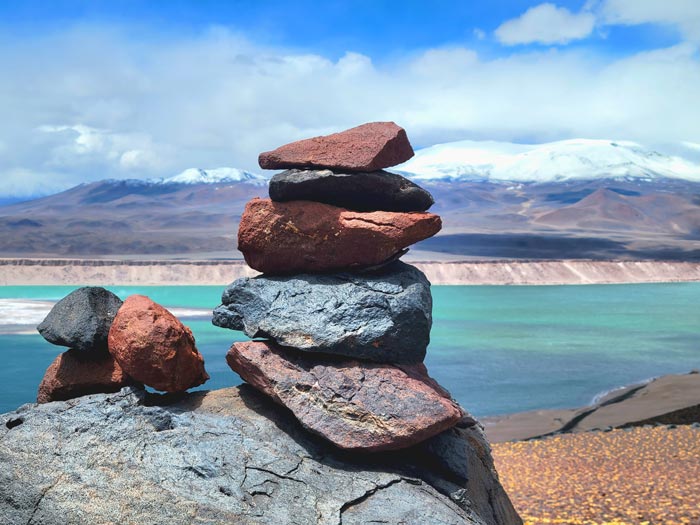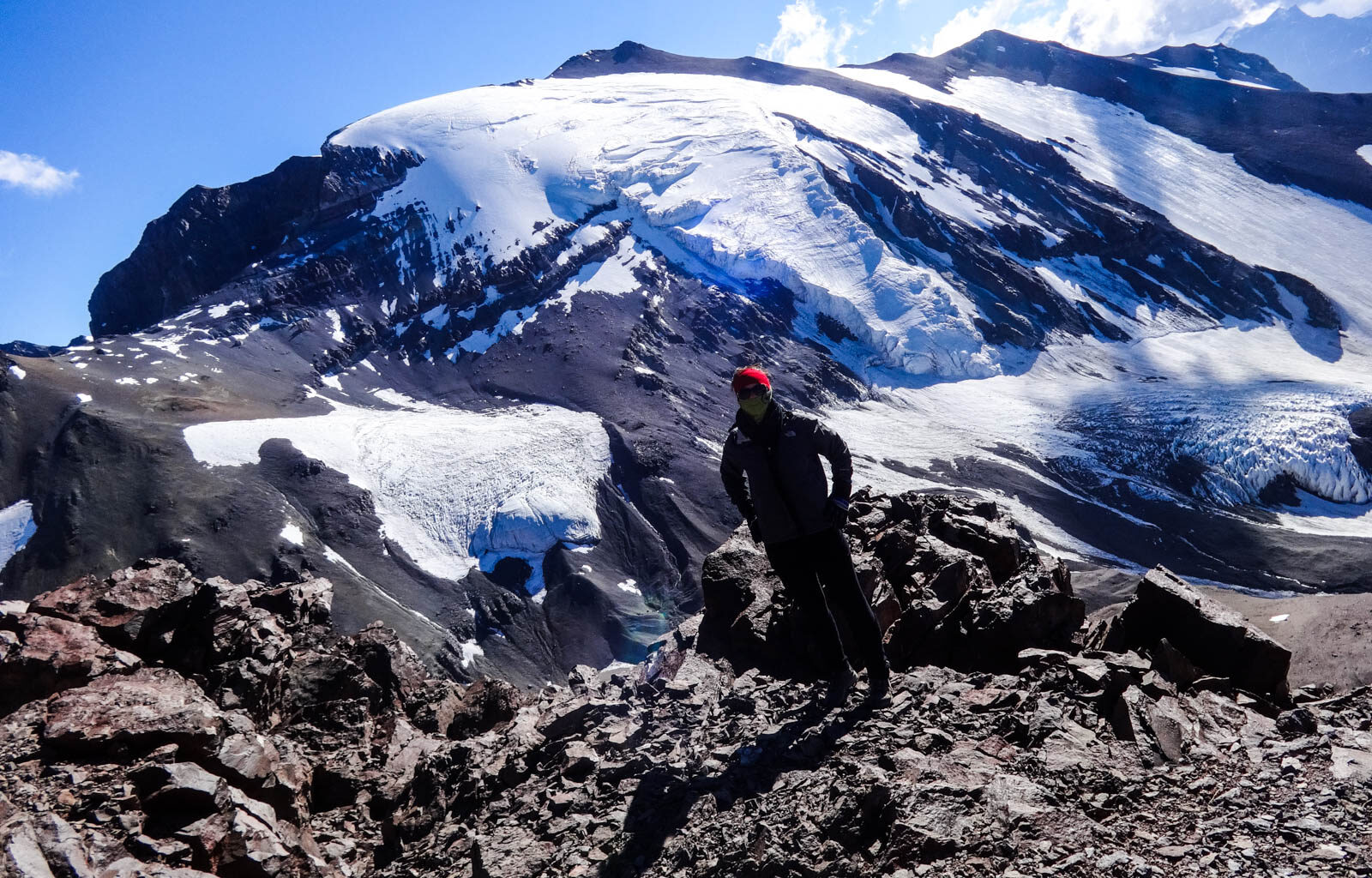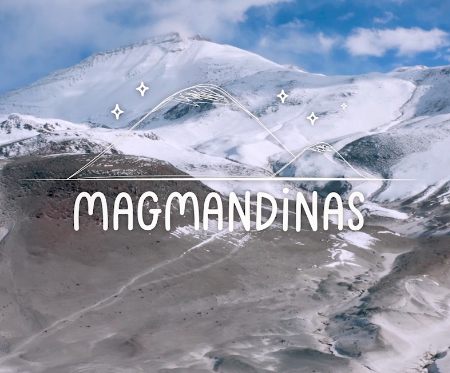Cerro Leonera is a low technical mountain in Farellones that boasts significant altitude (5000 meters), which makes it a perfect option for mountaineers looking for their first 5000m mountain, outdoor enthusiasts, and those looking training for higher mountains. The climb begins in the La Parva Ski Center, not far from Santiago, and is done in 1-2 days, depending on your objective and level.
–
Cerro Leonera, a dark brown, smooth edged beauty that sits in Farellones, just past El Pintor and right next to El Plomo. A couple of weeks prior, while training, I had lunch on the summit of Cerro Pintor while looking at her peacefully situated next to the powerful glaciers of Cerro El Plomo. She felt like the big little sister; smaller, but still so very much carrying her own.
Note: This article details my first time climbing Cerro Leonera, to help show what this experience looks like for “new” eyes. Some parts have been updated to reflect future ascents.
Cerro Leonera in Stats
Altitude: 4954 meters, 16250 feet
Elevation gain: 1600 meters, 6250 feet
Distance: 29 km, 18 miles
Time: 1-2 days depending on goals and experience
Difficulty: good physical condition, extreme cold
- Physical Capacity – Cerro Leonera has an important vertical elevation gain and horizontal distance covered, as well as final altitude, which requires a solid physical condition, meaning someone who exercises regularly.
- Wind and cold – Cerro Leonera is very windy, especially on summit day, and the windchill is very low, since the summit is exposed to north winds. This requires good equipment.
- Time – Climbers just starting or preparing for El Plomo, often climb Cerro Leonera in 2 days; the first stint up to Cancha Carreras and then a push to the summit the next day and back down to Santiago. Trail runners or mountaineers who are training resistance often do it in one day.
- Water – During summer, there is no water on the mountain, and also virtually no shade, so carrying 6 liters of water during summer months is recommendable.





The route to Cerro Leonera
Non technical but you better have hit the gym
The route to Cerro Leonera basically entails trekking up Cerro Pintor and then heading down the other side to continue on. But don´t let that scare you, you aren´t really climbing two mountains! You end up crossing over Cerro Pintor and skipping its summit push.
The starting point for Cerro Leonera is in La Parva, one of the big ski centers in Chile. The benefit of climbing December – February means… off season ski lift is open on the weekends!!
The times that I have had to walk the 2-2.5 hours up to Laguna Piuquenes (which, during winter months with snow is much more), always make me extremely grateful for when I can take the ski lift and glide over the area I sometimes have to trudge up. Oooooh, it is so great.
Checkpoint #1: Laguna Piuquenes and The False La Parva Summit
From the La Parva Ski Resort, you’ll either trek up the slopes to Laguna Piuquenes or you’ll take the ski lift to the top and then finish the last 15 minutes with your own two legs.
Once at the Laguna Piuquenes you have the steep climb up to the top of this area, which will get you to what’s known as the “false summit” of Cerro La Parva. In summer/fall months, this is a very sedimentary way up (acarreo in spanish) which can and will tire your legs. If there’s snow, use crampons depending on conditions, or dig your soles well in for good footing.
From the top, you continue crossing a large, mostly flat area with a well marked route, before heading behind Cerro La Parva and in direction of Cerro Pintor. You´ll eventually get to a little shelter right between the mountains and then head up towards Cerro Pintor, and about 20 minutes before the summit, you´ll veer to the left instead of up.
Once you cross, all of a sudden you get hit with the big view of Cancha Carreras, this massive plain that reminds me of what the moon might look like. In general, it takes about 3-4 hours to get to from the lagoon to Cancha Carreras, if you’re carrying your backpack.
A GUIDE BY YOUR SIDE (AND IN YOUR INBOX)
My “Word Cairns” newsletter sends inspiration, tips, stories, and photos from wild corners of this world. Plus, you’ll be the first to know about new expeditions, activities, and special offers.

Checkpoint #2: Cancha Carreras
For those doing Cerro Leonera in 2 days, this is where you camp. Just beware that since it’s such a huge, open space, the wind runs wild. We set up camp and cooked dinner before the sunset and the temperature dropped.
Looking at Cancha Cerreras from above or even when you’re right on it, it looks so smooth, like dust, a place that extra-terrestrials would land UFOs. This huge, flat plate with red/orangish mountains protecting it from all angles, extroardinarily large craters between mountains, and then these random severe drop offs. It’s truly a crazy place. So unique in its beauty.
Here I´ve seen everything. From intense fog that sweeps through in visible wisps to sometimes approaching slowly and overtaking everything, cutting eyesight of the surrounding mountains. Walking through it felt like a movie!
Note: There’s no water available from Cancha Carerras on up, so make sure you plan accordingly!





Summit morning
Around 8:30 we crawled in our sleeping bags, calling it an early night. This is pretty common when you’re up high enough that the cold, or the wind, prevents you from being able to hang out until late haha. At 4:00 am we were eating breakfast and around 5:00 am marching on. It was cooooold.
Everyone was bundled uptight, just our eyes showing as we finished crossing Cancha Carreras, arriving to the starting point of the mountain herself. It was pitch black and some of the beginning parts made me nervous. The route was skinny and steep and in this rocky section, the route was a little hard to follow.
I could vaguely make out the landscape below, forms of craters, between mountains, and more mountains sprawling on and on. There were needle eye-hole cuts in the rock, revealing drop-offs that I was glad to not be able to see.
The temperature on Cerro Leonera gets very low and often includes high winds. Be prepared!
Cerro Leonera is windy – you’ve been warned!
The morning was intensely cold and the ferociously strong winds that Leonera is known for were in full effect.
There were 3 of us leading the way and, while walking we were comfortable, when we stopped to wait for the others to catch up it seriously became unbearable. We tried to find rocks to hide behind but nothing really helped. We waited while we could then had to continue on because the cold was truly painful. Lessons were learned, and after this route, I bought better mittens and gloves.
The hose of my camelback was completely frozen and I couldn’t drink water. Note: a best practice includes “blowing” into the hose, leaving no water in it, so that the water goes back into the bag. This helps in very cold conditions, although you should always have a nalgene for a sure bet.
At one point, while climbing a particularly steep section, a huge gust of wind powered through, knocking us over and making us wonder if we should continue or not. After that any time I felt the wind coming stronger than normal I quickly braced myself onto the rock, crouching and holding tightly until it safely passed.
Big rocks = wind protection!
We finally got to a part where the end was in sight, the last horrah. From photos, it looks so simple, but in reality… it isn’t. As if the cold and wind didn’t make it hard enough, with the altitude around maybe 15,000 feet every step felt like two. After waiting a bit for the others, we continued on purely for the need to get the blood circulating. We were all freezing.

I was rubbing my fingers together and holding them up towards the sun. Eventually, they warmed up and I decided no more stopping, just slow steady. The last part was tiring but I didn’t even really realize it, all of a sudden I was up at the top, without even really being ready to be there.
Honestly, I stepped my feet on the peak and was so overwhelmed with having arrived, for having finished my first 5000m mountain, for all the energy that I had in my body propelling me upwards that so abruptly wasn’t needed, for the incredible sight in front of me, my eyes filled with tears. It was all just so beautiful.
Pure bliss!
It took us just over 5.5 hours from Cancha Carreras to the summit. Update: it typically takes 4-5 hours at a relaxed and steady pace.
I don’t know if it was the adrenaline or if, as the morning continued on, the wind and the cold got easier and easier, but we stayed up on the peak for about an hour before the cold forced us down.
We were sitting there, all so happy, starting at El Plomo, the big sister we’d be climbing in just 2 short weeks. The way down we were taking off layers like melting butter. Climbing a little later really would have made a big difference, the same places where we were frozen icicles were, in comparison, saunas. haha. Not really, but we were just fine with only a few layers, instead of constant jittering. We got back to camp, relaxed, ate, took down the tents, and made our way down.

When can you climb Cerro Leonera?
Cerro Leonera is most popular during the spring and summer months, but can be climbed year round by more experienced mountaineers with gear prepared for the cold. Like on Cerro Pintor, this mountain hits very cold temperatures, but has a windchill even more extreme due to receiving all the North winds.
How do you get to Cerro Leonera?
In your own vehicle: Head out of Santiago on Avenida Las Condes and continue straight, following the signs that direct you towards Farellones and the ski centers. Once you enter into the area, you have around 30 kilometers and 40 curves around the mountain!! Nausea is very real, so I don’t suggest reading if you’re in the passenger seat! During the summer, beware of cyclists!! Bikers often use these mountain curves for training during the summer, spring, and autumn.
Once you arrive to Farellones, you continue until you get to the La Parva Ski Resort. Up further are the El Colorado and Valle Nevado Ski Resorts. The La Parva area has a cute “small town” feel. If you’re there in summer, you can drive up to the Águilas ski lift and ride up to Laguna Piuquenes. If its winter or outside peak summer months when the ski lift isn’t available for mountaineers, you’ll need to park in a public space and begin walking from there.
If you go after June and throughout the winter, you are obligated to have chains for the tires. The police offers will not let you pass without them! During winter months, there is also public transport that takes you to Cerro La Parva Ski Resort.
Happy Climbing!
Related Articles

I'M TALKIN' TO YOU
Purpose-driven people who feel compelled to make life meaningful for yourself and others.
Outdoor-inspired people whose best self comes alive when experiencing beautiful places and pushing your limits in the open air.





